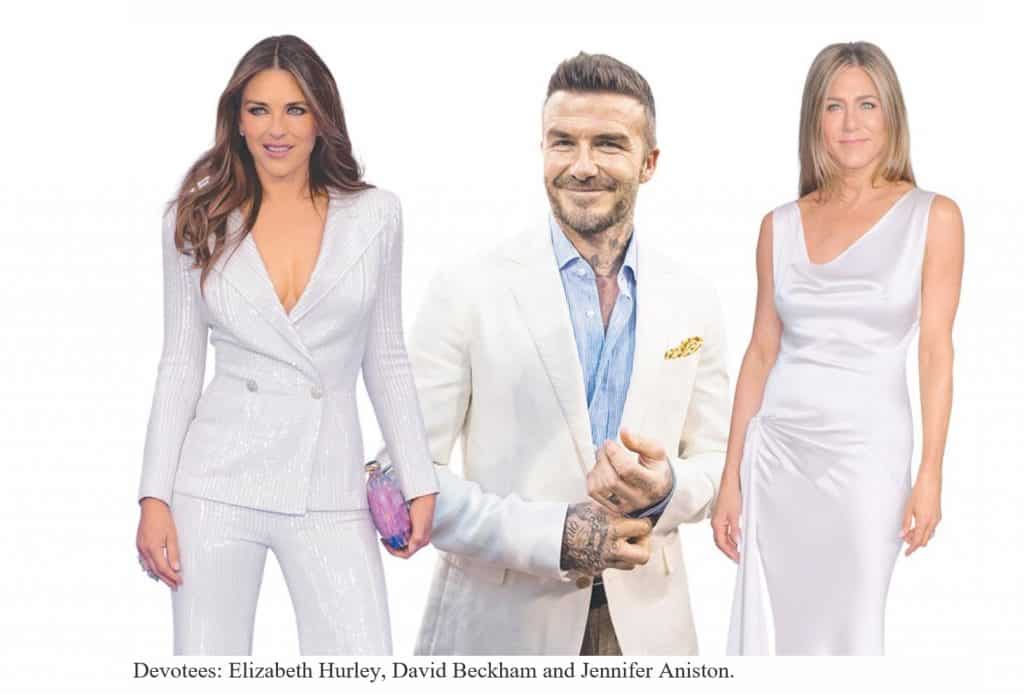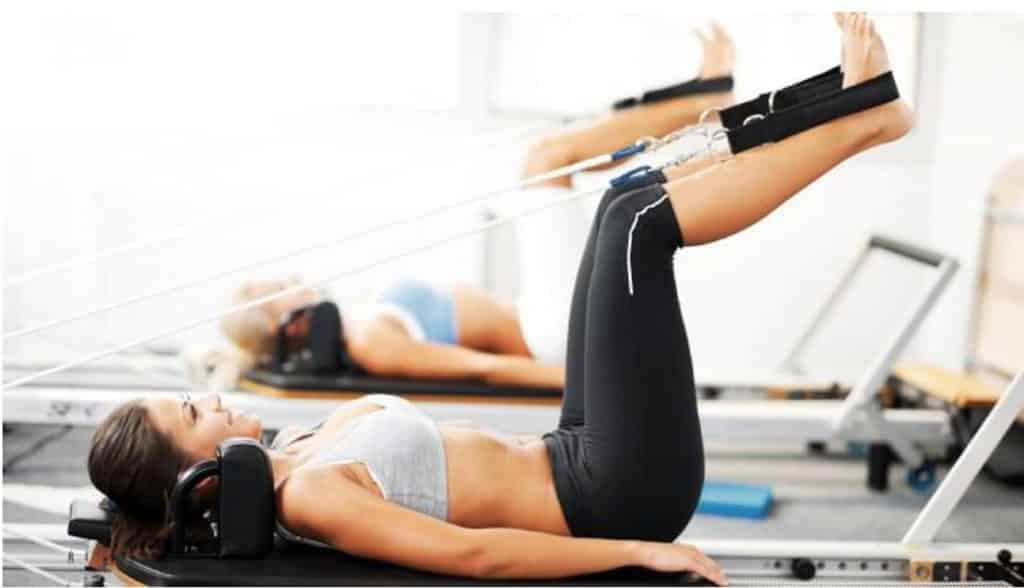Slow burn path to body beautiful
An exercise regime favoured by dancers has emerged from obscurity to become the go-to workout for athletes and entertainers.



Devotees: Elizabeth Hurley, David Beckham and Jennifer Aniston.
Not long ago it was the chosen fitness class for yummy mummies in expensive leggings, the easy exercise option for people who didn’t like to break sweat. Now Pilates is the workout for the super-buff — and that includes men.
David Beckham, Andy Murray and Matthew McConaughey do it, as do soccer starts Gareth Bale, Ryan Giggs, Diego Costa and Harry Kane.
Most of the famously super-fit Hollywood stars credit it as the secret to their firm bodies — Jennifer Aniston, Kate Hudson and Kate Bosworth are regulars at the Pilates studio. Adele, whose recent 20kg weight loss and toned body have been causing a stir recently, is reportedly a devotee.
Regulars credit it with transforming their bodies, improving core strength, balance, posture and flexibility. And, of course, it’s one of the best exercises for preventing a bad back.
As with all fitness trends, and like yoga before it, fashionable places to do it have been popping up everywhere.
Someone who isn’t surprised by its popularity is the woman dubbed the Queen of Pilates.
Lynne Robinson began teaching it 26 years ago and opened one of London’s first exclusive Pilates studios, in South Kensington in 1995. She has seen it outlast and outperform many fitness fads.
Today her celebrity client list includes Elizabeth Hurley, Holly Willoughby, Sophie Dahl and Hugh Grant, as well as Chelsea footballers and the England cricket team.
Like many others, she first tried Pilates in an attempt to cure back pain: “I had suffered a herniated disc in my lumbar spine trying to play golf a couple of years previously and nothing seemed to help. I was living in Sydney at the time and stumbled across a brilliant instructor who helped to improve my condition beyond all expectation.”
Now 65 but with a body as supple as that of someone 30 years younger, she has written 18 books, the latest being Shape Up With Pilates, produced numerous DVDs and overseen what has become the largest training school in Europe for Pilates teachers.
She says new research into its benefits has helped make people much more aware of the positive impact it can have, not only on a woman’s pelvic floor and abs but also on all-over body strength and function.



Research is revealing the benefits of Pilates not only on a woman’s pelvic floor and abs but also on all-over body strength and function.
“There is now so much medical backing for its effects, with physiotherapists and many GPs recommending Pilates because they understand how and why it works,” she says.
In 2017 a paper in the International Journal of Sport, Exercise and Training Science found men who did a one-hour Pilates class three times a week for 10 weeks were able to improve their step-up and leg-press performance because of the strength gained.
The journal Advances in Applied Science Research reported in 2015 that regular Pilates improved leg strength, gait and walking speed — all important for preventing falls — in people in their 60s and older.
Robinson remembers how Pilates was seen as quirky.
“It was at the end of the aerobics boom and people either hadn’t heard of it or thought it was an extreme regimen for professional dancers,” she says.
“They couldn’t grasp how important it was for helping bodies to be strong.”
Its reputation as principally a dancers’ training aid came from its beginnings in the New York “body-conditioning gym” opened by Joseph Pilates in 1926.
With a background in self-defence and boxing, he aimed to improve the fitness of the military and police but an influx of clients from the New York City Ballet school, which was on the same block, soon gave Pilates a reputation for creating long, lean and supple bodies. That reputation remains but Robinson says the teaching of Pilates has evolved when necessary. Pilates is now an essential part of the training regimens of Olympic athletes, as well as elite professional rugby players — the England, Wales and New Zealand rugby union teams rely on its ability to build strength and prevent injury.
Jon Ashton, a 37-year-old former professional soccer player turned fitness coach for Stevenage FC, is one of an emerging band of exercise specialists who is also a qualified Pilates instructor.
“My own physio recommended it to me when I was playing 10 years ago and it helped me to recover from a hip injury, but also to bounce back after matches,” Ashton says.
“I now use it with all of the players I coach as it improves their mobility and flexibility as well as their balance and strength. I get them to do 10-15 minutes of it every day.”
Ashton says Pilates being seen as such an effective tool in sports training is a big factor in its increasing popularity among men: “It was considered something of a women’s activity until a couple of years ago. Often I wouldn’t actually tell footballers what they were doing was Pilates until they realised that the exercises were working for them.
“Now there is a generation of men, fit and not so fit, who appreciate it stretches and strengthens, leaving you better equipped to move and play sport — to recover and therefore to train harder.”
And what of its ability to change your appearance? Robinson insists that will happen, given time and commitment.
“Pilates is a lifestyle choice. It is not going to produce immediate and dramatic fat loss like you might get from running or circuit training,” she says.
“But it is something that will change your life and your body shape if you do it regularly and stick with it. It will leave you with a better body in the long term.”
By PETA BEE
The Times
Share this article
Get A Gym Membership Today.
Call now, we’d love to welcome you to our Southport Gym.
